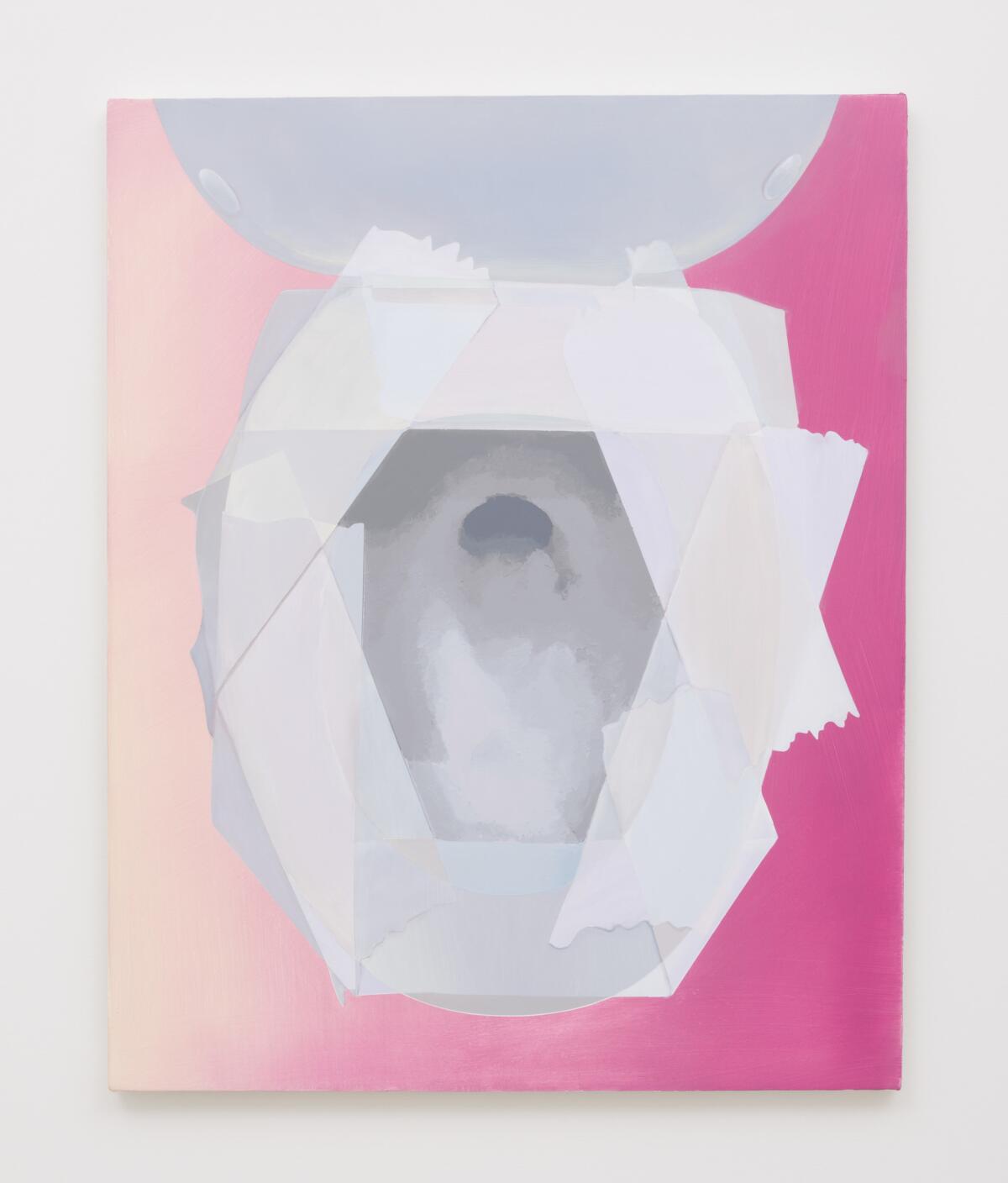Review: It’s bathroom art: Joel Holmberg’s toilet portraits
- Share via
Why an artist would think that it’s a good idea to paint pictures of a toilet bowl with a seat lined in strips of toilet paper is anybody’s guess. Yet, Joel Holmberg thinks so — a dozen times over.
Holmberg’s new paintings at Michael Benevento Gallery are aerial views looking down on the porcelain throne. All are the same size (30 by 24 inches), and the color schemes are dominated by neutrals and pretty pastels. The floor is either an incongruous solid color like royal blue or an atmospheric range of soft hues, such as peach sliding into hot pink. Four floors are depicted as classic tiled checkerboards.
The torn paper covering the seats is layered, creating geometric interlaces whose edges cast shadows through the water below. Holmberg paints the paper interlaces as nearly translucent; where they overlap, the surface breaks up into irregular patterns of colored shapes.
The scruffy subject has a brief but vaunted history. A famous cousin is Marcel Duchamp’s 1917 sculpture, “Fountain” — the once-scandalous, now celebrated urinal tipped over on its side. Edward Weston’s 1925 photograph “Excusado” presents the swelling, sensuous curves of a modern porcelain bathroom fixture as seen from below, endowing it with what he described in his “Daybooks” as the elegant grace of the “Winged Victory of Samothrace.”

In both of those earlier instances, the tension around art’s ostensible capacity to consecrate the profane was partly at issue. Andy Warhol’s serial imagery, in which a commonplace image is repeated ad infinitum, likewise raised the question. Holmberg’s paintings do too, but in a rather different way: It isn’t the bathroom fixture itself that is profane, but visual imagery itself that seems to need redemption. His paintings look bandaged.
Before the modern era, an image was something rare and, at its best, astounding to see. Today, when a billion images are processed daily, not so much.
Last year at the Hammer Biennial, Holmberg showed large paintings of rudimentary Web pages. (The artist was 9 when the World Wide Web became publicly available.) The tension between pixels and paint seemed to be his potentially productive interest, although these works felt unresolved.
By contrast, Holmberg lavishes his potty paintings with care and attention. With Duchamp’s Industrial Age sculpture, Weston’s elegant camera picture and Warhol’s serial imagery as background, these still life compositions dissolve into abstraction as you scrutinize them. What’s odd is that, at the moment when their subject disappears, they become compelling as paintings.
Michael Benevento Gallery, 3712 Beverly Blvd., L.A. Through July 8; closed Sundays and Mondays. (323) 874-6400, www.beneventolosangeles.com
Twitter: @KnightLAT
The biggest entertainment stories
Get our big stories about Hollywood, film, television, music, arts, culture and more right in your inbox as soon as they publish.
You may occasionally receive promotional content from the Los Angeles Times.








